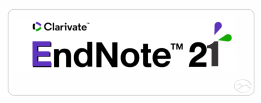Publicado 2025-01-30
Palabras clave
- Idioms, metaphorical language, academic writing, corpus data, formulaic competence.
Cómo citar
Derechos de autor 2025 Svetlana Danilina

Esta obra está bajo una licencia internacional Creative Commons Atribución 4.0.
Resumen
This study investigates the use of idiomatic expressions in academic writing by Ukrainian university students learning English as a foreign language. The research analyzes the frequency of idiom use in essays written by two groups of students: one group explicitly taught academic English idioms and a control group. Findings reveal that Ukrainian students employ idiomatic expressions more frequently than native English speakers, as evidenced by comparisons with the British Academic Spoken English (BASE) corpus and the Michigan Corpus of Academic Spoken English (MICASE). Notably, even the control group exhibited higher idiomaticity than their native-speaker counterparts. These results highlight the importance of addressing idiomatic language in academic English instruction for non-native speakers. The study discusses the potential benefits and challenges of incorporating idioms into teaching materials and provides insights for educators aiming to improve the phraseological competence of their students.
Descargas
Citas
- Ädel, A., & Erman, B. (2012). Recurrent word combinations in academic writing by native and non-native speakers of English: A lexical bundles approach. English for Specific Purposes, 31(2), 81-92. https://doi.org/10.1016/j.esp.2011.08.004
- Baker, M. (2017). In Other Words. New York: Routledge.
- Biber, D., & Barbieri, F. (2007). Lexical bundles in university spoken and written registers. English for Specific Purposes, 26, 263–286. https://doi.org/10.1016/j.esp.2006.08.003
- Boers, F., Demecheleer, M., Coxhead, A., & Webb, S. (2014). Gauging the effects of exercises on verb-noun collocations. Language Teaching Research, 18(1), 54–74. https://doi.org/10.1177/1362168813505389
- Boers, F., Dang, T. C., & Strong, B. (2017). Comparing the effectiveness of phrase-focused exercises. Language Teaching Research, 21(3), 362–380. https://doi.org/10.1177/1362168816651464
- Herrmann, J.B. (2013). Metaphor in Academic Discourse. Utrecht: LOT.
- Lakoff, G. (1993). The contemporary theory of metaphor. In A. Ortony (Ed.), Metaphor and thought (pp. 202-251). Cambridge: Cambridge University Press.
- Lazar, G. (2003). Meanings and Metaphors. Cambridge: Cambridge University Press.
- Lysanets, Yu., & Bieliaieva, O. (2023). Idiomatic potential of anatomical terminology and its role in developing English language proficiency. The Medical and Ecological Problems, 27(1-2), 29-34. https://doi.org/10.31718/mep.2023.27.1-2.06
- MICUSP. (2009). Ann Arbor, MI: The Regents of the University of Michigan. Retrieved from: https://elicorpora.info/main
- Miller, J. (2020). The bottom line: are idioms used in English academic speech and writing? Journal of English for Academic Purposes, 43, 100810. https://doi.org/10.1016/j.jeap.2019.100810
- Moon, R. (1998). Fixed expressions and idioms in English: a corpus-based approach. Oxford: Clarendon Press.
- Oakey, D. (2020). Phrases in EAP academic writing pedagogy: Illuminating Halliday’s influence on research and practice. Journal of English for Academic Purposes, 44, 1-16. https://doi.org/10.1016/j.jeap.2019.100829
- Park, J., & Chon, Y. (2019). EFL Learners’ Knowledge of High-frequency Words in the Comprehension of Idioms: A Boost or a Burden? A Journal of Language Teaching and Research, 50(2), 219-234. https://doi.org/10.1177/0033688217748024
- Peters, E. (2016). The learning burden of collocations: The role of interlexical and intralexical factors. Language Teaching Research, 20(1), 113–138. https://doi.org/10.1177/1362168814568131
- Rahmtallah, E.A.E. (2024). EFL Learners' Comprehension of English Idioms at the University Level. Journal of Education and Practice, 15(6), 24-33. https://doi.org/10.7176/JEP/15-6-03
- Ruskan, A., Hint, H., Leijen, D.A.J., & Šinkūnienė, J. (2023). Lithuanian academic discourse revisited: Features and patterns of scientific communication. Open Linguistics, 9(1), 1-19. https://doi.org/10.1515/opli-2022-0231
- Shin, Y.K. (2019). Do native writers always have a head start over nonnative writers? The use of lexical bundles in college students’ essays. Journal of English for Academic Purposes, 40, 1-14. https://doi.org/10.1016/j.jeap.2019.04.004
- Simpson, R., & Mendis, D. (2003). A Corpus-Based Study of Idioms in Academic Speech. TESOL Quarterly, 37(3), 419-441.
- Snoder, P. (2017). Improving English Learners’ Productive Collocation Knowledge: The Effects of Involvement Load, Spacing, and Intentionality. TESL Canada Journal, 34(3), 140-164. https://doi.org/10.18806/tesl.v34i3.1277
- Stamenkoska, I. (2017). Idioms in the EFL Classroom. Horizon Series A, 21, 85-94. https://uklo.edu.mk/wp-content/uploads/2022/07/7.pdf
- Szudarski, P. (2017). Learning and teaching L2 collocations: insights from research. TESL Canada Journal, 34(3), 205-216. https://doi.org/10.18806/tesl.v34i3.1280
- Ta'amneh, M. A. A. A. (2021). Strategies and Difficulties of Learning English Idioms Among University Students. Strategies, 12(23), 76-84. https://doi.org/10.7176/JEP/12-23-10
- Tran, H.Q. (2017). Figurative idiomatic competence: An analysis of EFL learners in Vietnam. Asian-focused ELT research and practice: Voices from the far edge, 66–86. https://leia.org/LEiA/LEiA%20VOLUMES/Download/Asian_Focused_ELT_Research_and_Practice.pdf#page=79
- Vongpumivitch, V., Yu, L-T., & Nguyen, T.P. (2023). Distance education project of English idioms learning from watching YouTube. Frontiers in Psychology 14, 1-8. https://doi.org/10.3389/fpsyg.2023.1171735











